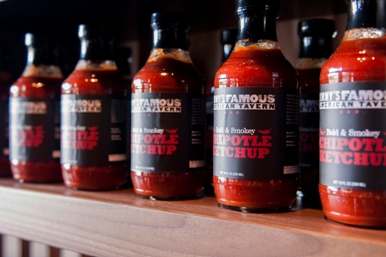Do you have what it takes to market your creation? Put your late night, car ride inspired recipes to the test.Great Taste talked to Chris
Q: What is the first step an entrepreneur must take when attempting to get their product manufactured and mass distributed?
A: Most entrepreneurs have wonderful and creative ideas, but getting them mass distributed is a real challenge. Knowing the realities of the business and being prepared for them is the first step. Fact is it takes on average about 3 years before food company becomes profitable, so being well capitalized and understanding how to make money in the business is just as important (if not more important) than the taste of your product.
Q: What are your top three tips for those seeking to get their products manufactured and on the shelves of grocery stores?
A: 1. Make sure you have something that is truly new the brand, the product, the messaging.
2. Have passion and patience for the business:there are no instant hits in the food world.
3. Packaging is the product:spend time and effort on messaging and involve experts to help if you are not one.
Q: Any major faux pas you suggest avoiding?
A: Thinking just because your family and friends like the product that America is going to love it. Get your product into the hands of strangers that can be truthful.
Q: How is a product’s viability determined?
A: A. Can it make a profit?
B. Does the world want it?
C. Is it unique to stand out among the other 48,000 products in the average supermarket?
Q: Do branding and quality play equal roles in determining viability?
A: Quality is a given, you have to have that. Branding is what stops a consumer in the aisle and gets them to pick it up and put it in their cart.
Q: How important is a niche factor?
A: Being unique is key. Whether you want to call it a niche or perhaps you just have a way of approaching a big established category in a new way there are three key words in the food business. New, New and New.
Q: How likely is an individual to be successful if they are attempting to market a variation on an already popular product? What does this success hinge on?
A: 9 out of 10 new food products fail. But introducing a twist in a sleepy category that is ripe for innovation is a good idea. There are a lot of sleepy categories in the supermarket where nothing has changed for years. Come up with a twist to make it more convenient, create a whole new set of flavors or develop a new contempory brand and you have a good shot.
Q: In what ways must one adjust their branding and marketing tactics when selling to specialty markets in contrast to super markets?
A: You have a lot more freedom and leeway in specialty markets. Specialty markets will take risks on new products and often command higher prices. Specialty markets want to sell a unique experience to their consumers, so if your product is unique or special you will have a chance in the specialty channel.
Q: Are there any well-established brands that are immune from the threat of new product competition or do you think that all food products are subject to the next best thing?
A: Everyone is competing for share of stomach. However there are some perennials that will always have some insulation from competition. Especially iconic foods that are hard to duplicate like the Oreo or Heinz Ketchup.
Q: Which popular food products do you feel expertly marry brand and item sold? (One – two examples will suffice.)
A: I love all the old brands that re-invent themselves to stay relevant with each generation. PopTarts, Campbell’s, Nesquik even Coke continues to innovate and find new ways to stay relevant. There are plenty that could have survived had they simply evolved the brand and product.
Q: Do you have any advice relating specifically to condiments? i.e. packaging and marketing
A: Condiments are a great new frontier. Look at the proliferation of new ones lately–Sriracha, flavored mayo’s, BBQ sauces from Korea and other parts of the world, ketchup packaged in the upside down bottles! We are all looking for new flavors and convenient ways to use them; I think condiments are going to continue to explode.
Q: How should one alter their approach when branding and marketing a condiment versus e.g. cookies, bread etc?
A: Every product is unique and needs a reason for being. Whether you are a cookie or a condiment, you need to master what we call the STOP and SELL. Get a consumer to STOP in the aisle and pick up the product and then SELL them to put it in their cart. I don’t care if you are a cookie or a condiment the same principle applies.
Q: Is there a difference in difficulty when marketing condiments versus e.g. cookies, bread, etc?
A: Baked goods go bad so you better get someone to pick it up fast or you’ll eat the cost.